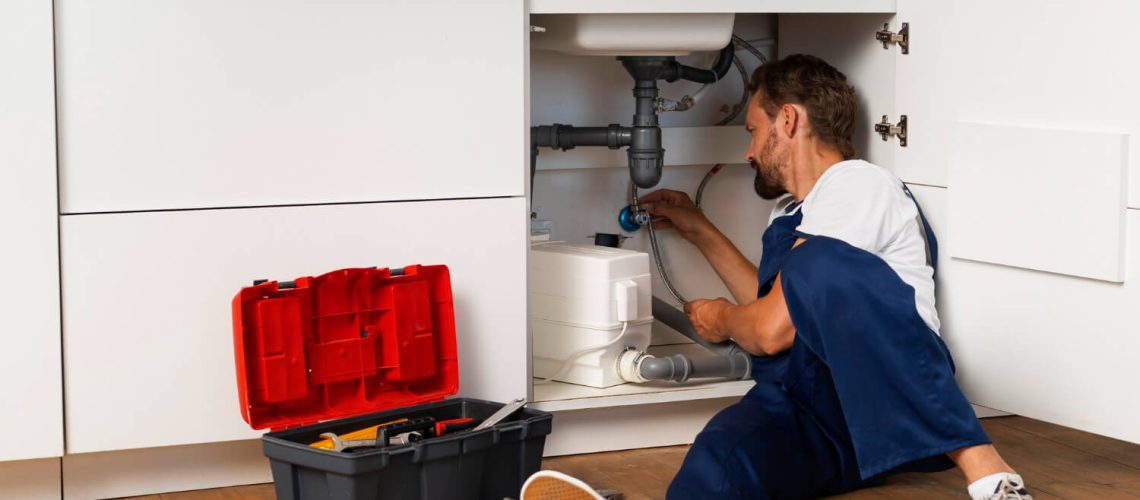Upgrade to Low-Flow Plumbing Fixtures and Save Water
Switching to low-flow plumbing fixtures can make a big difference in water conservation and energy savings. It’s an eco-friendly choice that can benefit your household and the planet. If you ever face an issue like a burst pipe or a leaking fixture, you can rely on emergency plumbing in Knoxville, TN services to address the problem quickly. Taking steps towards sustainability starts with these small changes in your plumbing system, and in the process, you’ll also save on your water and energy bills.
How Low-Flow Fixtures Reduce Water Waste
Impact on Water Conservation
Low-flow fixtures play a key role in water conservation by using less water for everyday activities. Traditional showerheads and faucets can waste a lot of water over time, but low-flow alternatives use significantly less while maintaining strong performance. For example, a standard showerhead might use 2.5 gallons per minute, while a low-flow model uses 2 gallons or less. This change can add up to thousands of gallons saved each year in a single household. The impact on overall water use is noticeable and benefits both individuals and the environment.
Effect on Local Water Supplies
Upgrading to low-flow fixtures helps protect local water supplies. In areas where water scarcity is an issue, the reduced demand for water systems is especially important. When many homes and businesses switch to low-flow options, the strain on reservoirs and water treatment facilities is lessened. This means local communities have more available water for essential needs like agriculture and drinking water. Over time, these savings help maintain healthier water ecosystems and provide a more sustainable future for the region.
Lowering Your Energy Usage with Low-Flow Fixtures
Reducing the Energy Needed to Heat Water
Low-flow fixtures don’t just save water; they also reduce the amount of energy needed to heat that water. Traditional faucets and showerheads let water flow at higher rates, which means more energy is used to heat large volumes. By using low-flow fixtures, you can cut down the amount of hot water used in your home. Less water means less energy is required to keep it warm. This leads to lower energy consumption in water heaters, whether you use gas, electricity, or solar power, making your home more efficient.
Benefits for Your Energy Bills
With less energy needed to heat water, your energy bills will start to drop. When you use low-flow plumbing, it directly impacts your monthly expenses. The less hot water you use, the less your water heater runs. Over time, this can lead to significant savings on energy costs. This is especially true in colder regions, where water heaters work harder in the winter months. Even in milder climates, the savings add up, making low-flow fixtures a smart choice for cutting utility costs.
The Positive Effect on Greenhouse Gas Emissions
Reducing the Carbon Footprint
Low-flow fixtures help reduce your carbon footprint by cutting down the energy needed for water heating and delivery. The less energy you use, the fewer greenhouse gases are released into the atmosphere from power plants. In homes with traditional plumbing fixtures, a significant amount of energy goes into heating and pumping water. By switching to low-flow fixtures, you’re directly lowering the demand for energy, which leads to fewer carbon emissions. This small change in your household can have a meaningful impact on your overall environmental footprint.
Supporting Global Climate Efforts
When more households and businesses adopt low-flow plumbing, the combined reduction in energy use supports global efforts to combat climate change. Countries worldwide are pushing for more efficient energy practices to meet climate goals. By reducing water waste and energy consumption, low-flow fixtures contribute to these larger efforts. Even though it may seem like a small change on its own, widespread use of these fixtures can help reduce the strain on natural resources and slow the effects of climate change. Every home that upgrades helps make a difference on a larger scale.
Cost Savings with Low-Flow Plumbing Upgrades
Lower Utility Bills Over Time
One of the biggest benefits of upgrading to low-flow plumbing fixtures is the immediate reduction in utility bills. By using less water, you pay less each month. Standard fixtures waste gallons of water daily, which adds up to higher costs over time. Low-flow options help you control this. You’ll notice savings on both water and energy bills since less hot water is used. Over the course of a year, these savings can become significant, especially for large households where water use is higher.
Long-Term Return on Investment
Upgrading to low-flow fixtures offers a long-term return on investment. While the initial cost of installing these fixtures might seem like an expense, the savings on water and energy over the years far outweigh it. Many homeowners see the return within a short time, making it a smart investment. In fact, depending on your location, you may even qualify for rebates or incentives for installing water-efficient fixtures. In the end, low-flow plumbing upgrades not only save money but also add value to your home, making them a practical and economical choice.
Easy Installation and Maintenance of Low-Flow Fixtures
Simple Upgrades You Can Do Yourself
Installing low-flow fixtures is a straightforward process that most homeowners can handle without professional help. For example, replacing a standard showerhead with a low-flow model requires nothing more than unscrewing the old one and attaching the new one. Many low-flow faucet aerators can also be easily installed by twisting them onto the faucet. These upgrades require minimal tools and time, making them accessible for anyone looking to reduce water use. With basic instructions, you can make these changes and start saving water right away.
When to Call a Professional Plumber
While many low-flow fixture upgrades can be done on your own, some situations may call for a professional plumber. If you’re replacing older toilets with low-flow models or need to install new pipes, professional help might be required. A plumber can ensure the installation is done correctly, especially if your home’s plumbing is outdated or complex. In cases where there are leaks or other underlying issues, it’s best to have a plumber assess and fix the problem. This ensures your low-flow fixtures work efficiently and prevent any future problems.
Long-Term Environmental Benefits of Low-Flow Plumbing
Protecting Freshwater Resources
Low-flow plumbing fixtures are a valuable tool for conserving freshwater. Water shortages have become more common in many areas, making it important to use water more efficiently. These fixtures, such as low-flow toilets and showerheads, help reduce the amount of water used in daily tasks without sacrificing function. By using less water, households help ease the demand for local water supplies. This is particularly beneficial in regions like California, where droughts can be severe. Installing low-flow plumbing is a practical way to contribute to water conservation efforts.
Promoting Sustainable Living
Upgrading to low-flow plumbing fixtures is an easy way to adopt more sustainable practices at home. By reducing water consumption, you help protect natural resources and reduce the strain on the environment. This is one of the simplest changes you can make to support sustainability in your household. Small changes can have long-lasting positive effects, such as using less water. As more people upgrade to low-flow fixtures, the combined impact helps create a greener future, benefiting communities and the planet as a whole.
Make a Positive Impact by Upgrading to Low-Flow Fixtures
Choosing to upgrade to low-flow plumbing fixtures is an easy way to contribute to water conservation and lower energy use. The reduction in water waste helps protect natural resources, while the decreased energy consumption benefits the environment by minimizing greenhouse gas emissions. Besides the environmental impact, these fixtures provide long-term savings on utility bills, making them a cost-effective solution for homeowners. By making these simple upgrades, you are actively participating in creating a more sustainable future and preserving precious resources for generations to come.



